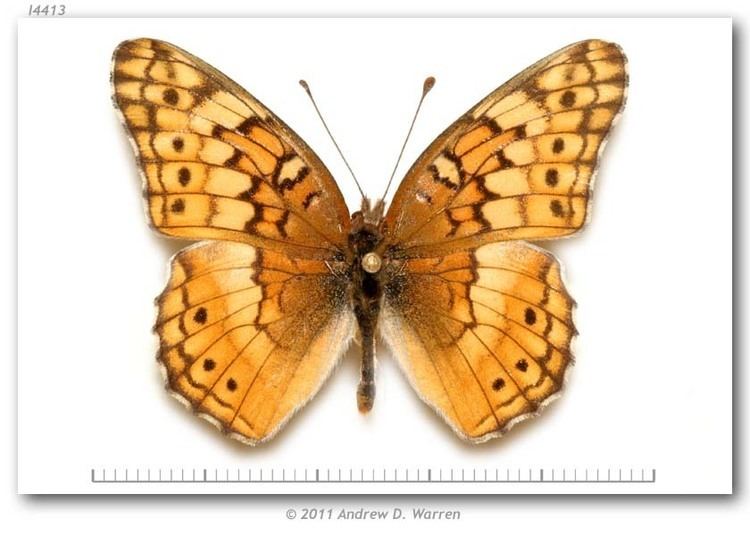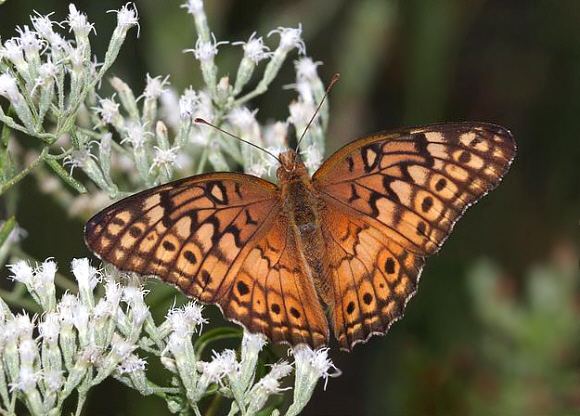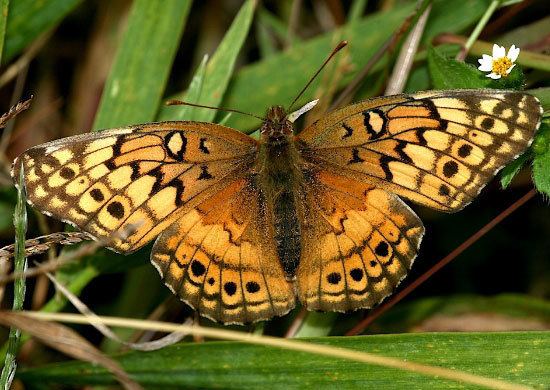Genus Euptoieta Rank Species | ||
 | ||
Similar Euptoieta, Gray hairstreak, Pearl crescent, Asterocampa celtis, Gulf fritillary | ||
Variegated fritillary euptoieta claudia working hard
Euptoieta claudia, the variegated fritillary, is a North and South American butterfly in the family Nymphalidae. Even though the variegated fritillary has some very different characteristics from the Speyeria fritillaries, it is still closely related to them. Some of the differences are: variegated fritillaries have two or three broods per year vs. one per year in Speyeria; they are nomadic vs. sedentary; and they use a wide range of host plants vs. just violets. And because of their use of passionflowers as a host plant, variegated fritillaries also have taxonomic links to the heliconians. Their flight is low and swift, but even when resting or nectaring, this species is extremely difficult to approach, and, because of this, its genus name was taken from the Greek word euptoietos meaning "easily scared".
Contents
- Variegated fritillary euptoieta claudia working hard
- Euptoieta claudia hortensia blanchard 1852
- Description
- Similar species
- Flight period
- Habitat
- Nectar plants
- Host plants
- References

Euptoieta claudia hortensia blanchard 1852
Description

The upperside of the wings is checkered with orange and black. Both the forewing and hindwing have a row of submarginal black spots and black median lines running across the wings. The underside of the forewing is orange with a pale orange spot rimmed in black in the forewing cell. The underside of the hindwing is mottled with browns and grays with a pale postmedian band. There is no silvering. The wingspan measures 1.75–2.25 inches (44–57 mm).
Similar species

In the variegated fritillary's range, the only similar species is the Mexican fritillary (Euptoieta hegesia). The Mexican fritillary is brighter orange, the upper side of its hindwing basal area is unmarked, and the underside of its wings is plainer, with no submarginal spots or median black lines.
Flight period

This species may be seen flying from April to October in the south, while in the north it flies from summer to early fall.
Habitat
This butterfly is often found in open, disturbed habitats such as clover and alfalfa fields, pastures, fields, waste areas, roadsides, and mountain meadows.
Nectar plants
Here is a list of some of the flowers that the variegated fritillary uses as nectar plants:
Males actively patrol for females. Females lay their pale-green or cream-colored eggs singly on host plant leaves and stems. The larva eats the leaves, flowers, and stems of the food plant. The larva is red with black subdorsal and spiracular stripes infused with white spotting. In many individuals, the white is more conspicuous than the black. The red middorsal stripe bears white (sometimes black) oval-shaped spots, one per segment. It has six rows of black spines and has a pair of long, clubbed spines on the head. The chrysalis is mainly shiny white, with small black spots, a variable amount of brown markings, and orange and gold tubercules. Adults overwinter in the south and fly north each spring and summer. It has 2–3 broods per year.
Host plants
This is a list of host plants used by the variegated fritillary:
